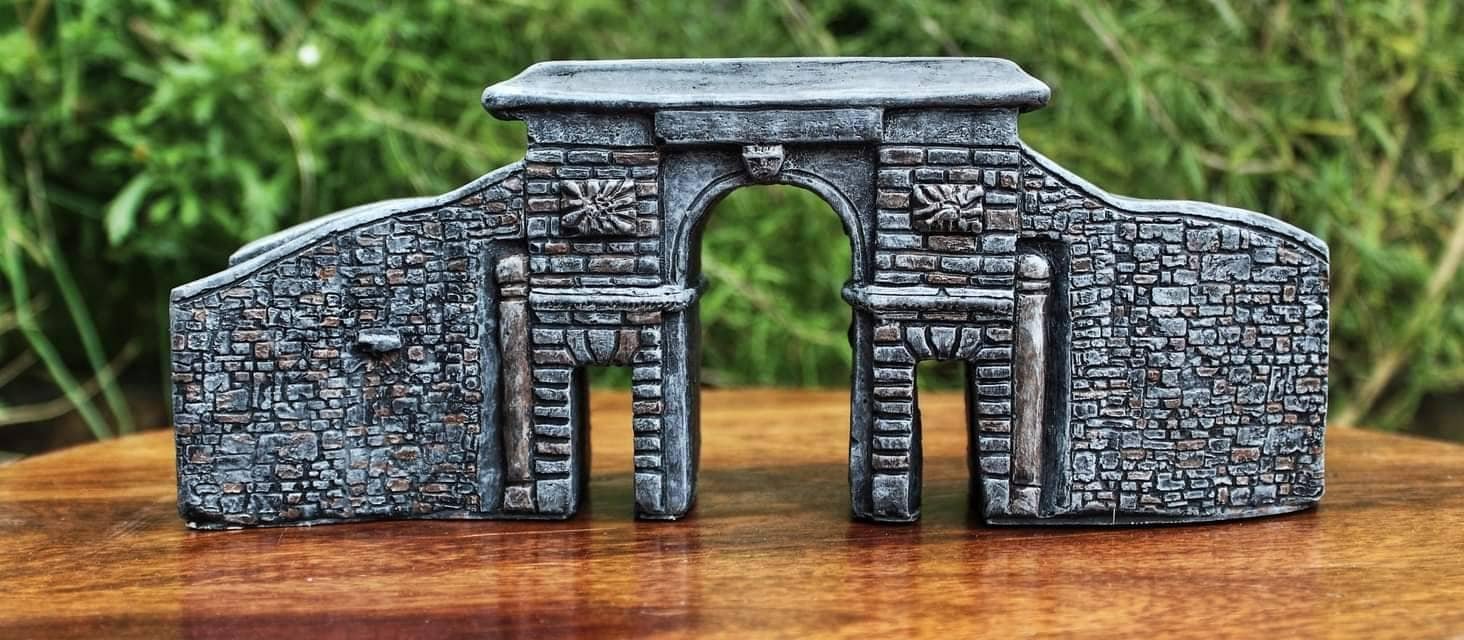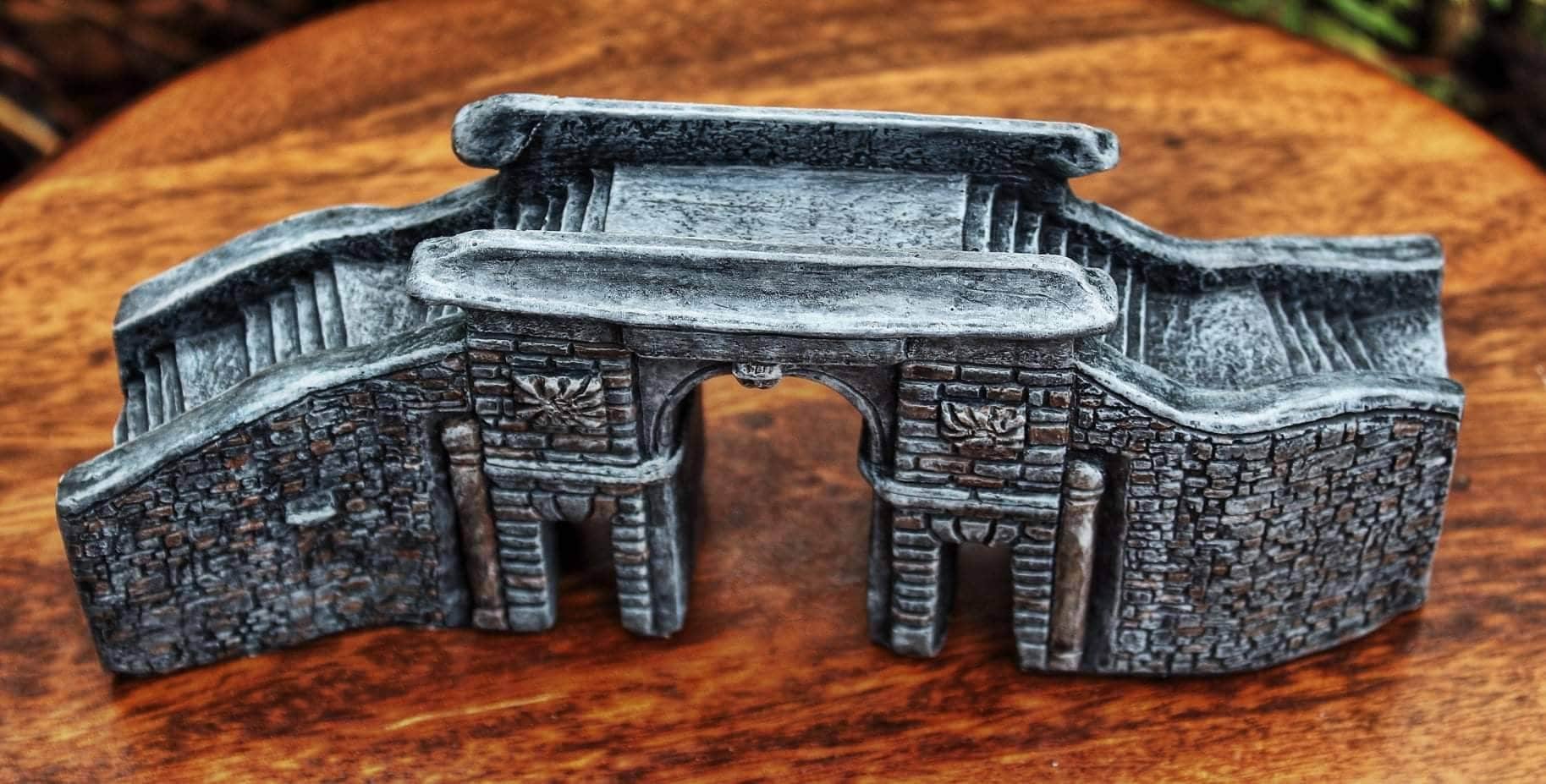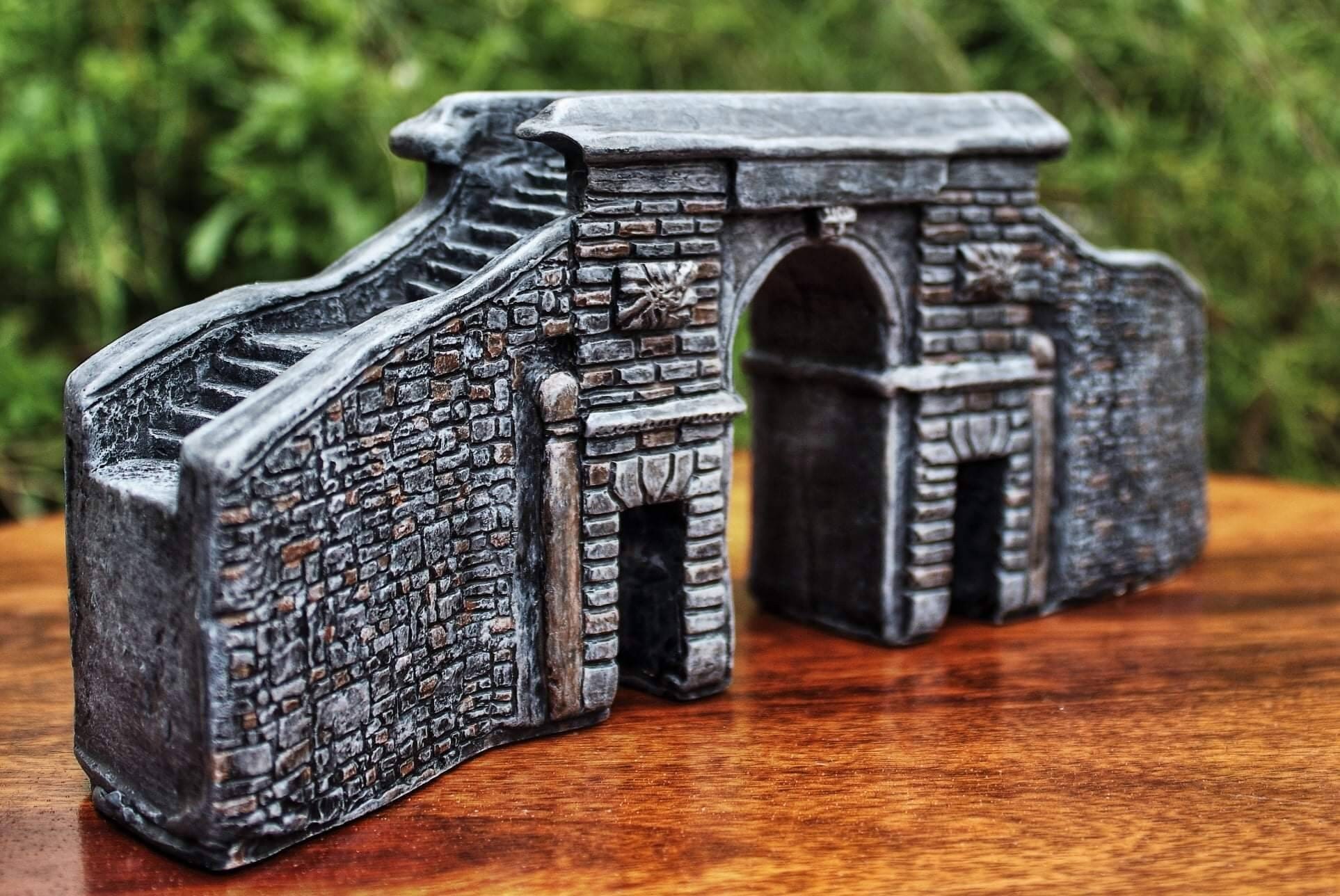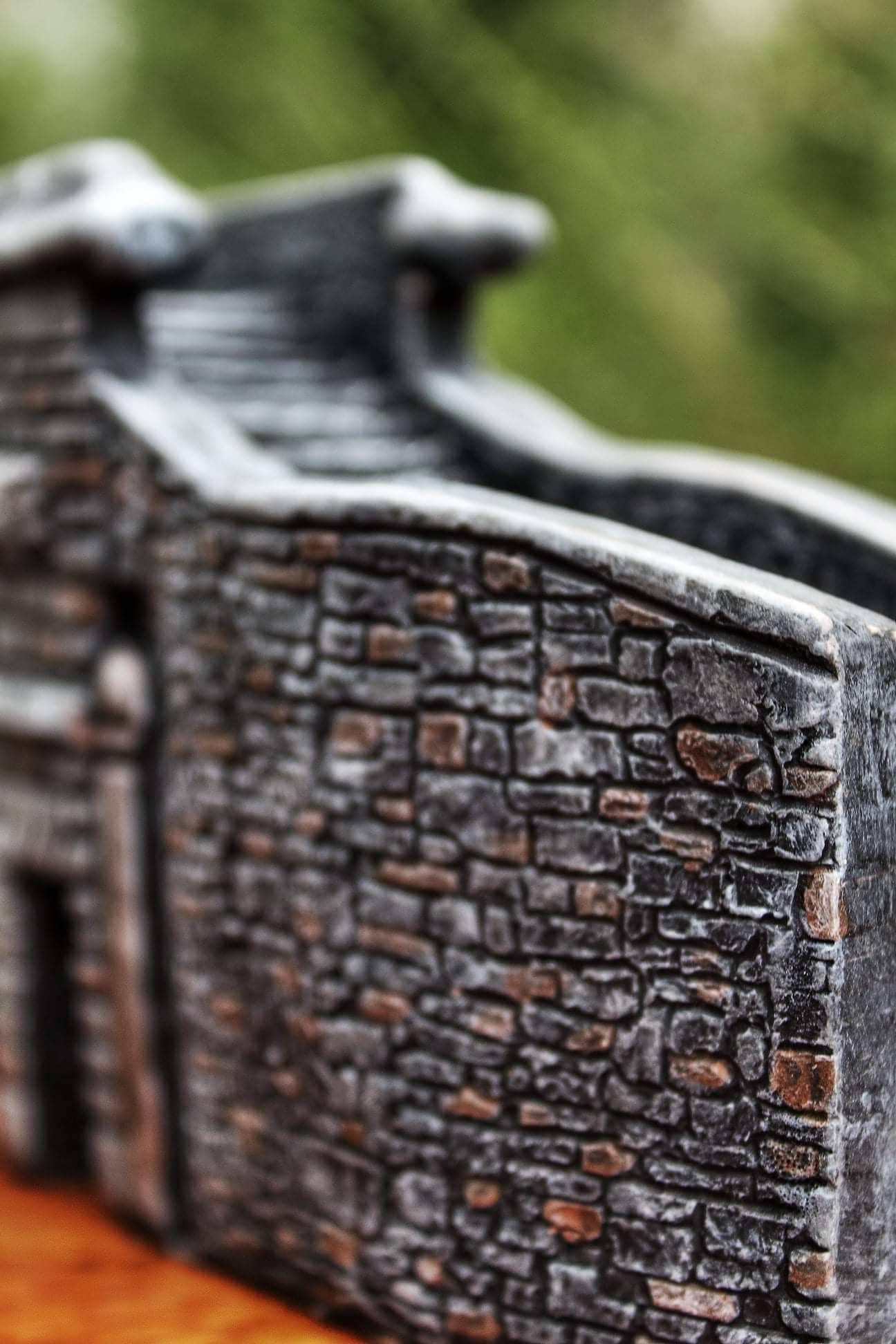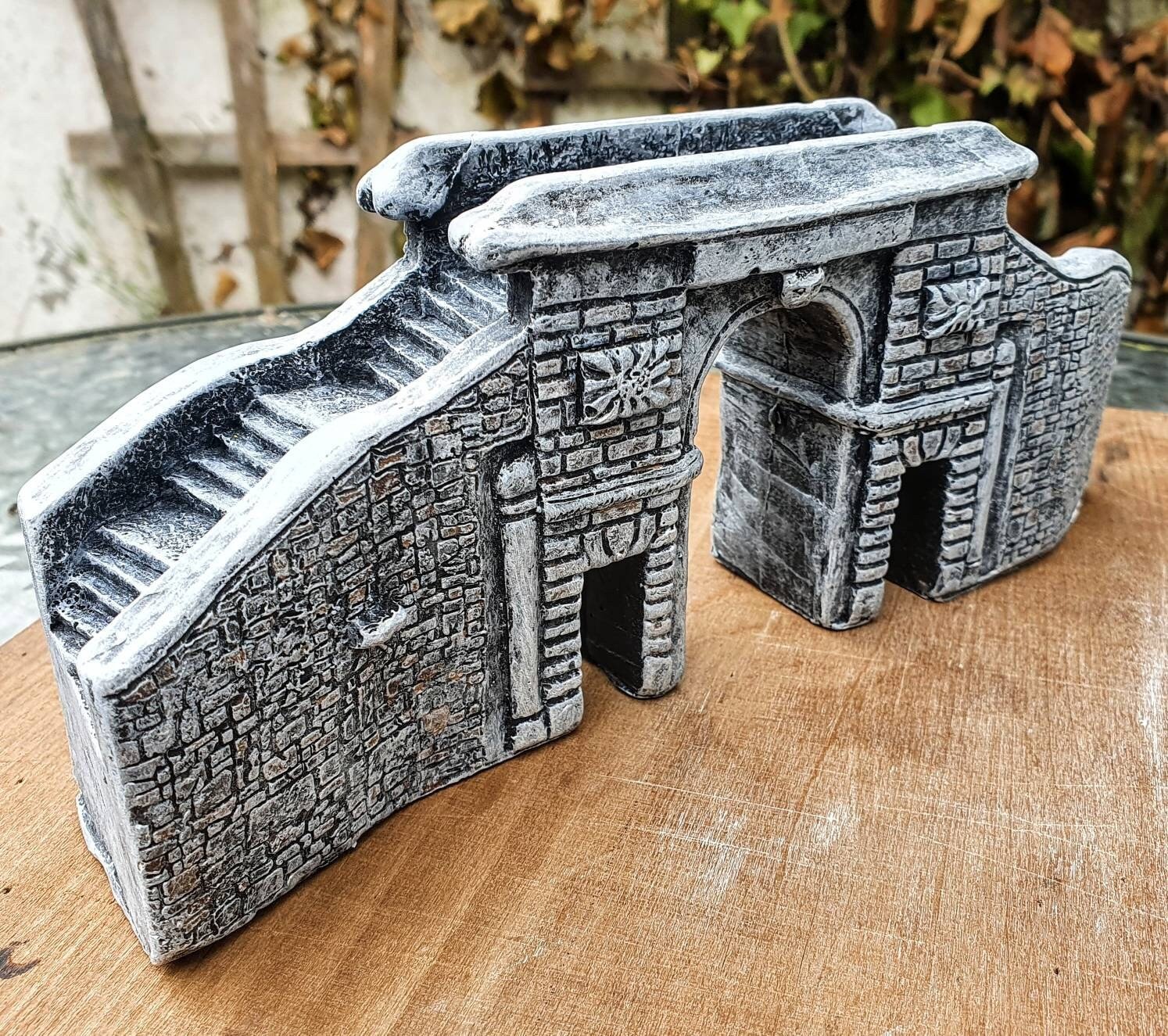Bishop's Gate, Derry Walls, Derry City.
Dimensions: 9.5” at base, 4” high.
Bishop’s Gate was one of the four original entrances to the city. The current gate was erected in 1789 in commemoration of the 1689 siege. It was built in the style of a triumphal arch to celebrate the centenary of the ‘Shutting of the Gates’. The gate is constructed from buff ashlar sandstone and has a central semi-circular-arched vehicular opening flanked by two flat-arched pedestrian passages. The architect was H.A. Baker, with the sculpted head keystones representing the River Foyle (external) and the River Boyne (internal) designed by Edward Smyth, who had sculptured the thirteen riverine heads on the Dublin Custom House in c.1784. On either side of the gate are steps giving access to the City Walls.
The gate was commandeered by the British Army during 'The Troubles' and has since become a major tourist attraction in peace time.
Dimensions: 9.5” at base, 4” high.
Bishop’s Gate was one of the four original entrances to the city. The current gate was erected in 1789 in commemoration of the 1689 siege. It was built in the style of a triumphal arch to celebrate the centenary of the ‘Shutting of the Gates’. The gate is constructed from buff ashlar sandstone and has a central semi-circular-arched vehicular opening flanked by two flat-arched pedestrian passages. The architect was H.A. Baker, with the sculpted head keystones representing the River Foyle (external) and the River Boyne (internal) designed by Edward Smyth, who had sculptured the thirteen riverine heads on the Dublin Custom House in c.1784. On either side of the gate are steps giving access to the City Walls.
The gate was commandeered by the British Army during 'The Troubles' and has since become a major tourist attraction in peace time.
Dimensions: 9” across, 5” high
FREE SHIPPING WORLDWIDE
